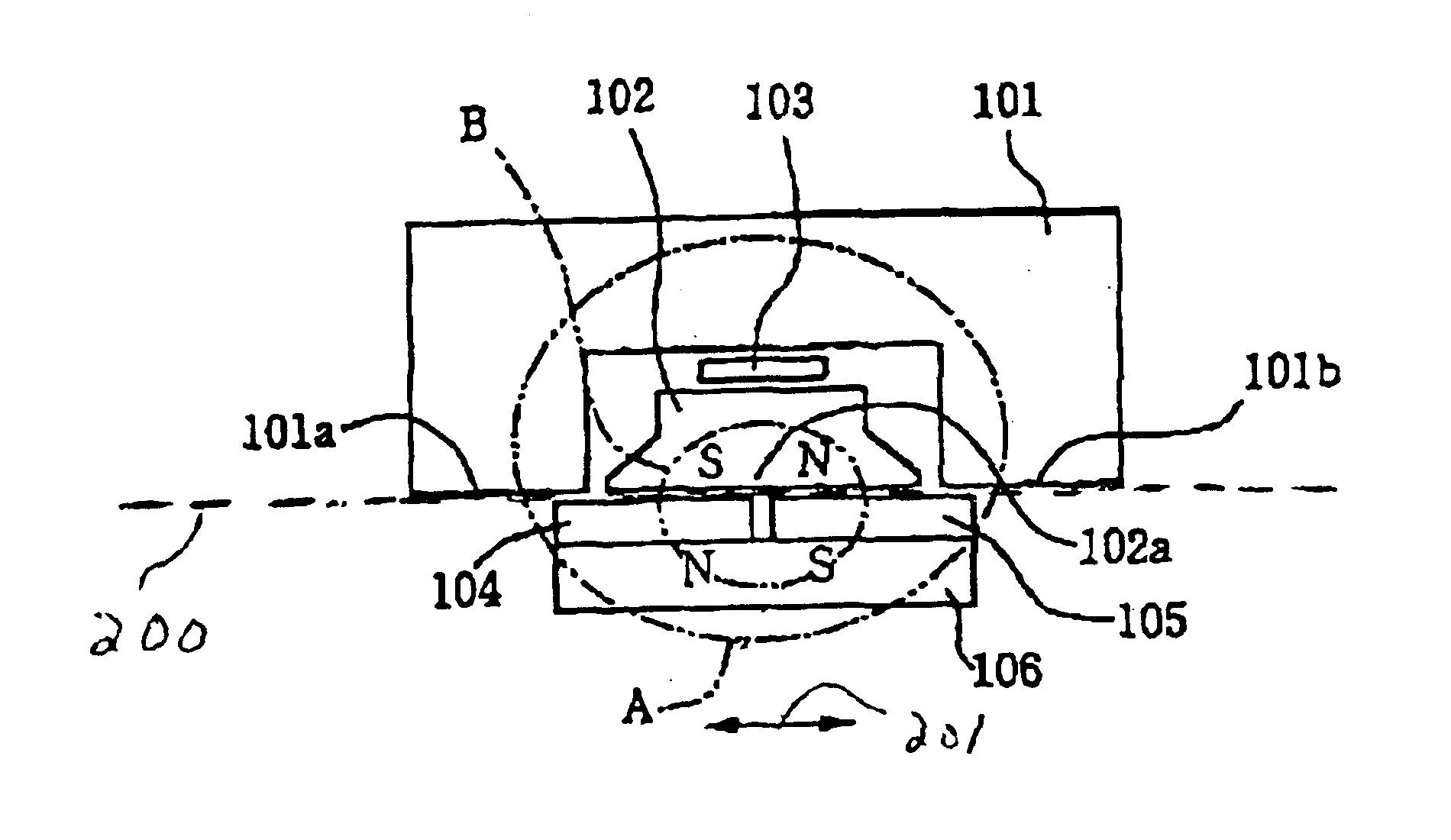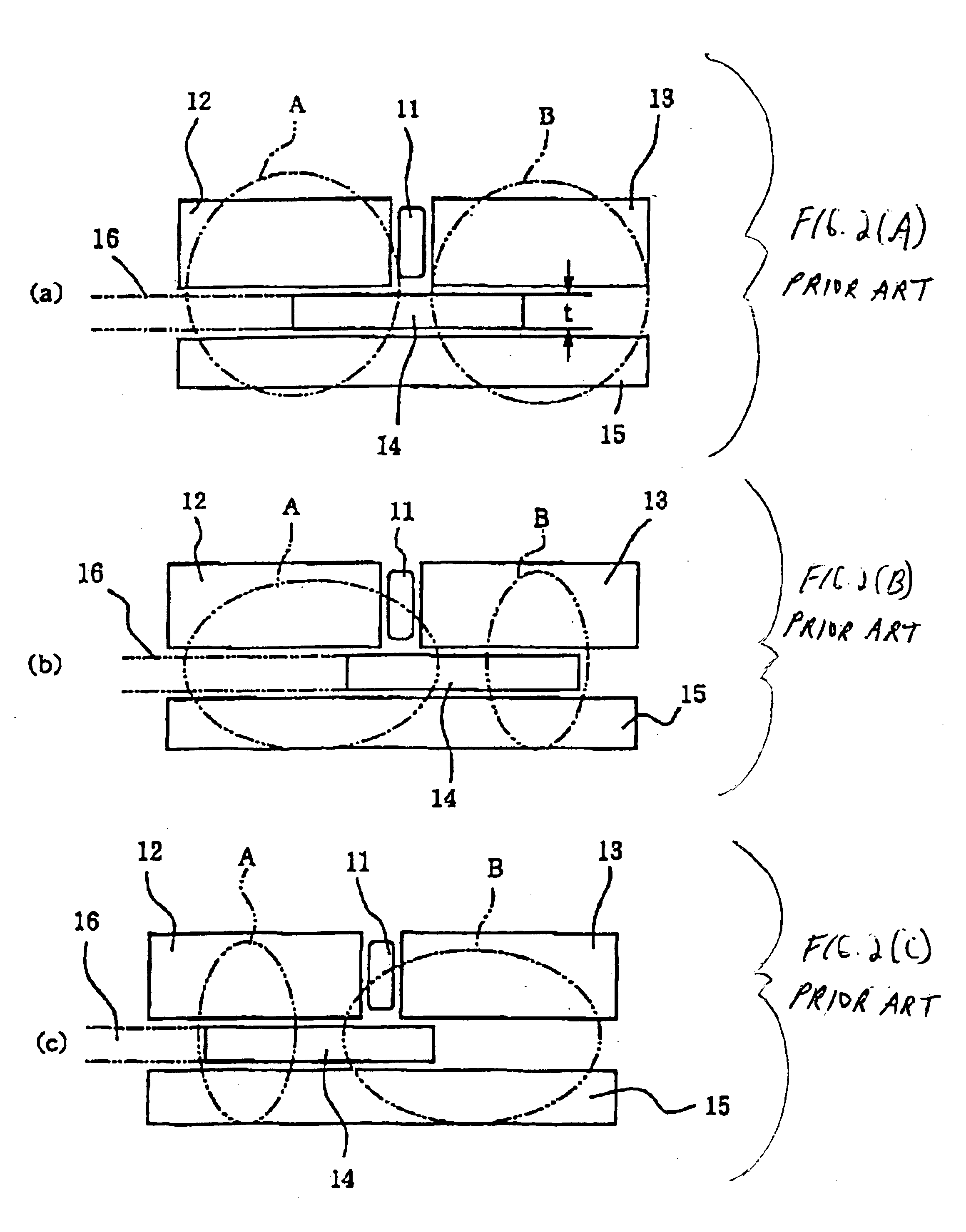Non-contact position sensor having specific configuration of stators and magnets
- Summary
- Abstract
- Description
- Claims
- Application Information
AI Technical Summary
Benefits of technology
Problems solved by technology
Method used
Image
Examples
Embodiment Construction
Reference will now be made in detail to a present preferred embodiment of the present invention, examples of which are illustrated in the accompanying drawings, wherein like reference numerals refer to elements throughout.
FIGS. 3(A), 3(B) and 3(C) are views showing a configuration for a linear sensor as a non-contact position sensor, according to an embodiment of the present invention. The sensor includes a first stator 101, a second stator 102, a hall element 103 located between the first stator 101 and the second stator 102, moveable magnets 104 and 105 located facing the first stator 101 and the second stator 102, and a slider 106 joining the moveable magnets. The first stator 101 is reverse-C-shaped and has magnet facing sides 101a and 101b on both sides, the second stator 102 has just one magnet facing side 102a, and these three magnet facing sides 101a, 101b and 102a are arranged along a straight line locus 200. In this embodiment, locus 200 is a straight line. However, the pr...
PUM
 Login to View More
Login to View More Abstract
Description
Claims
Application Information
 Login to View More
Login to View More - R&D
- Intellectual Property
- Life Sciences
- Materials
- Tech Scout
- Unparalleled Data Quality
- Higher Quality Content
- 60% Fewer Hallucinations
Browse by: Latest US Patents, China's latest patents, Technical Efficacy Thesaurus, Application Domain, Technology Topic, Popular Technical Reports.
© 2025 PatSnap. All rights reserved.Legal|Privacy policy|Modern Slavery Act Transparency Statement|Sitemap|About US| Contact US: help@patsnap.com



